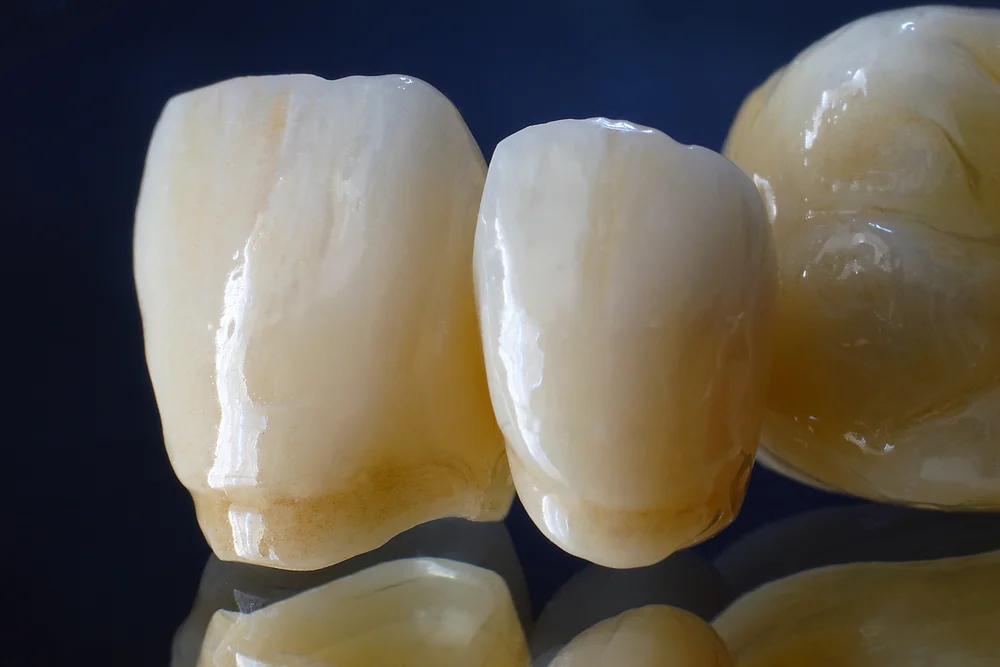- Knocked-out teeth often result from a sudden injury or from eating hard foods.
- Immediately preserving your tooth and promptly seeing your dentist may help you retain your tooth.
- There are several replacement options available in the event your tooth is not salvageable.
A blow to the face, a fall, an accident during a sports activity or a car accident can all cause permanent teeth to become dislodged from the mouth. It is also possible to lose a tooth by eating hard foods or candies.
If you incur this type of dental emergency, it is essential to take quick action to save your tooth. Here are the steps to follow should you be faced with this unfortunate situation.
What should I do if I knock out a permanent tooth?
If you knock out a permanent tooth, bear in mind that time is of the essence. Optimally, you want to arrive at your dentist’s office within 30 minutes of its dislodging, but with careful preservation you may have up to one hour.
1. Gently pick up the tooth by its crown (the chewing surface).
Never hold the tooth by the root, as this action could cause the tooth to be permanently damaged.
2. Rinse the tooth with cool water to gently clean it.
Hold it under the water for no more than 10 seconds and be careful not to knock off any pieces of tissue. Do not use any cleaning products, such as soap or bleach.
3. If possible, place the tooth back in its socket.
“If the tooth is returned to the site of injury quickly, it still has the ability to be reimplanted naturally,” says Dr. Amanda Sheehan of Oakland Family Dental in Waterford, MI. “At this point, it should go directly back into the socket with very little finger pressure,” she explains.
After placing the tooth in its socket, hold it in place with your finger or by closing your mouth. If possible, bite on a clean cloth to help hold the tooth securely in place until you are able to see your dentist.
4. If not, keep it moist.
If you are unable to put the tooth back in, keep it as moist as possible. Do not wrap it in a tissue or cloth. Instead, place it under your tongue or in a container filled with cold milk (never in a cup of water or saline solution) until you can reach a dentist.
Reaching your dentist for care
“If your regular dentist is open or available for emergency needs within 30 minutes to an hour, proceed to their office immediately,” says Dr. Tim Stirneman of Compassionate Dental Care in Lake in the Hills, IL.
If they are not in the office, dial their emergency number to let them know you need assistance and are on your way to their clinic. If they are not available or do not provide 24/7 care, drive to the nearest dental practice or emergency dentist’s office.
“The faster you can see a doctor, the higher the probability they will be able to reattach the tooth,” says Dr. Stirneman.
How does the dentist reimplant my tooth?
Reimplantation will depend on the degree of trauma. In all cases, your dentist will begin by evaluating the injury and flushing any debris from the socket with water. A local anesthetic may be administered to numb the gum area.
If the tooth has been preserved correctly and there are no tooth remains broken off in the gums, the doctor will place the tooth back in its socket. Once reimplanted, the dentist will put a splint made of soft wire on the tooth to hold it in place and help promote healing.
Can all permanent teeth be reimplanted?
In short, no, not all permanent teeth can be saved. The prognosis depends on the type of trauma, the state of preservation, and how quickly you can see a dentist.
However, it is always worthwhile to try to save a tooth; your dentist will be able to determine your situation.
Additional procedures and follow-up treatments
In some cases, you may need a follow-up appointment for a root canal to remove the nerves and replace them with a biocompatible material. This treatment helps further preserve the natural tooth while preventing infection. Most roots will reattach to the bone in a matter of weeks.
You will be required to return to the dentist’s office at a later date to remove the splint. If the jaw bone or tooth is fractured, you may also need emergency or scheduled surgery.
Your dental professional will explain when and how often to return to their clinic based on your needs.
What are my options for a permanently lost tooth?
There are a variety of ways to replace a knocked-out tooth that are both functionally effective and cosmetically pleasing.
Options for adult tooth replacement include bridges and implants. These choices vary in price, strength, and lifespan, so it is important for you and your dentist to carefully discuss the pros and cons of each.
Dental bridges
Bridges are fixed dental devices made up of one or more false teeth. These replacement restorations are also known as crowns or abutments. If you and your dentist agree to a bridge, the dentist will first reshape the teeth that sit adjacent to the site of the missing tooth to allow the bridge to fit properly.
The dentist will then make an impression of your missing tooth or teeth and create a customized replacement. Once the replacement is ready, the dentist will cement the new abutments onto the existing teeth at each side of your missing permanent tooth.
Dental implants
If you are not interested in bridges, dental implants are the most natural-looking and functioning alternative to a permanent tooth. A titanium screw is implanted into the site of the missing tooth to act as the tooth’s root, while a natural-looking crown is placed on top.
Implants are highly durable and can last up to a lifetime, but they usually require more treatment than a bridge.
Dental implants are completed in stages. First, if you do not have enough jawbone to hold the metal implant, it may be prepared to hold the implant properly during a surgical process called bone grafting.
During bone grafting, a piece of bone that is removed from another part of your body — such as your hip — is transplanted to your jawbone. An artificial bone can also be used, if necessary.
After this surgery, your jawbone could take up to several months to heal. Once it heals, you will then return to your dentist to have the metal implant post inserted into your jaw. This will need some time to fuse to the bone.
After a healing period of 3–6 months (depending on your unique case), a crown made to look like your natural tooth is placed on top of the implant.
Dentists are able to digitally shape the crown to the same structure and color as the lost tooth. Cosmetically, no one will be able to tell the difference between an implant and an original, permanent tooth. In addition, the fixture functions the same and permanently preserves the jaw bone underneath the gums.
What about baby teeth?
According to recent research, knocked-out teeth are more common with permanent teeth than baby or primary teeth. However, it is possible for children with baby teeth to suffer injury while eating, due to an accident, or from contact sports.
While baby teeth are impermanent, losing them too early can cause crooked teeth or eating problems. If your child has a knocked-out tooth, follow the preservation and reinsertion instructions detailed above for permanent teeth.
Once you arrive at the dentist’s office, they will determine how to proceed. In cases where a child is expecting to grow permanent teeth soon, the dentist may recommend careful observation until the adult tooth comes through.
Preventing knocked-out teeth
Wearing an athletic mouth guard and avoiding risky activities and contact sports can help prevent knocking out a tooth. However, whatever our best intentions, it is not always possible to keep such an injury from occurring.
Be prepared. Check your dentist’s emergency policies and locate an additional emergency dentist in your area as a backup resource. Keep all contact information at hand and above all, seek care immediately in the event of an accident.









